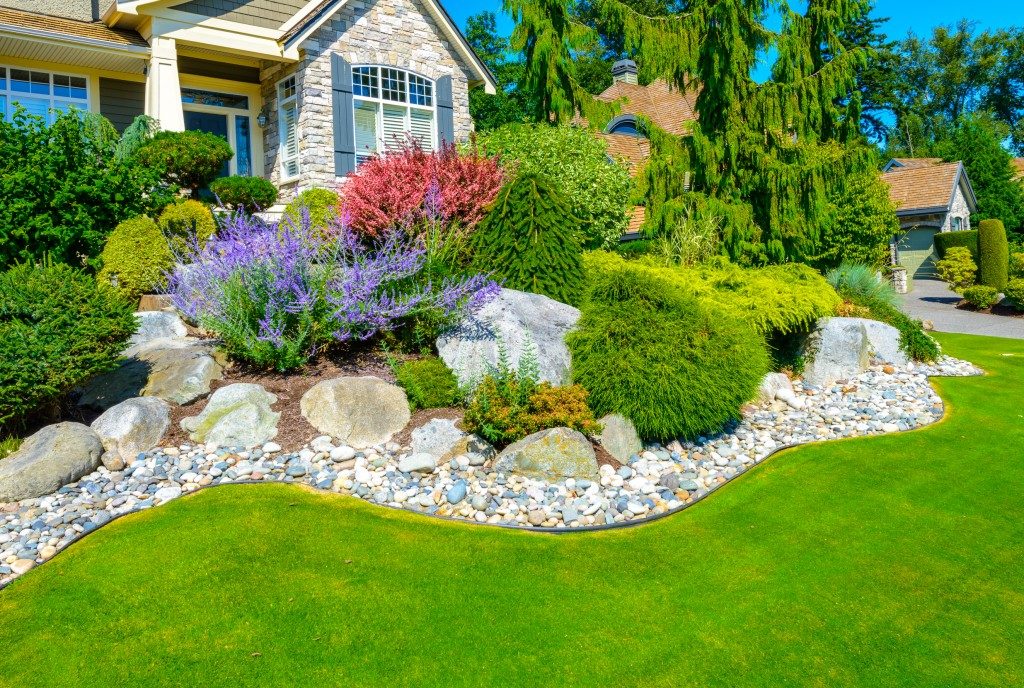Disclaimer: What Liberty Ate. This site provides food and drink content for informational purposes only.
You don’t need a lot of chemicals to make your lawn healthy. With the right approach, your lawn will flourish, endure the hotness of the weather and fight off diseases. To have a beautiful lawn, you can follow the helpful tips from lawn experts.
If you need further assistance, you can never go wrong with a professional sprinkler valve repair service in Sandy or any other area. This service will ensure that your plants get the right amount of water they need to grow.
Preparing for a New Lawn
When you buy a new property with an existing lawn that wasn’t adequately maintained by the previous owner, you might need to remove the old plants so that you can lay new turf.
The useful tools you need to set up your lawn include:
- Shovel: Aside from digging purposes, shovel helps you remove bigger debris with ease.
- Hand weeder: Some weed killing products have higher rates of toxicity to human cells. An economical and safe way is to use a hand weeder, as it’s designed to eradicate weeds and their roots.
- Lawn shear: If your mower can’t reach certain areas of your yard, you could use lawn shears. They can come in short grip, long handle, or motorized that can make your job easier.
- Lawnmower: The type of mower you need depends on the size of your yard. Electric, reel, battery- or gas-driven lawnmowers are available on the market.
- Leaf rake: This is the best tool to remove dead leaves and other debris without much effort. It’s better to choose the one that is ergonomically effective to protect your back.
- Watering hose: Make sure you get a watering hose with the proper length to ensure that all the areas of your garden receive ample moisture.
- Aerator: To ensure proper growth of your plants, aerate the ground. This helps you avoid close-packed grasses. Making holes through the soil will help your plants access water better and grow healthier.
- Wheelbarrow: This will be very helpful to carry and transport unwanted things and debris from your lawn for disposal.
- Fertilizer Cart: Using this is the best way to distribute fertilizer evenly all over your lawn. Do not use a fertilizer cart for any other application to make sure your plants won’t get harmed if you forget to wash it.
Starting a New Lawn
The most convenient and fastest way to establish a lawn is by laying sods or turfs. They are carpets of grass that are already growing, having roots in the soil. It is vital to choose a sod variety that is suitable for your climate. The two types of grass you can find on the market are:
- Warm-season grass: endures the heat of the summer
- Cool-season grass: thrives in cooler weather
Turf gives you comfort to pick the right grass since you can see and feel them before buying it. You should only buy freshly cut sod, as grasses don’t survive long on sod. The carpet or attached soil must not be crumbly or dried out. Choose the turf with healthy plants and wet soil.
Laying Turfs

The proper way to place your turfs must be in a staggered pattern and lay them out end to end. It’s like you’re laying down a line of bricks. The pieces should never overlap. Another thing you must always remember is to avoid stretching the turf to prevent gaps. After laying the lawn, avoid walking on them for the first week until the grass is fully established.
If laying turfs is not your option, what you can do is start a new lawn by seed. In choosing the right seeds, you must be aware of the type of climate in your location. You can consult experts to determine the specific seed type you need.
Choose the right fertilizer so that your lawn receives the needed phosphorus, potassium, and nitrogen. Ideally, to maintain a healthy lawn, it needs 1 to 1.5 inches of water per week. Having sprinklers in your yard will make your life easier.

